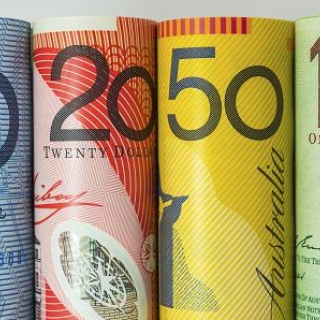


The AUD/USD pair strengthened around 0.6400 as the US Dollar (USD) weakened during the Asian session on Monday. There are no Federal Reserve (Fed) speakers this week as the media is closed. All eyes will be on the Reserve Bank of Australia (RBA) rate decision on Tuesday, with no rate changes expected.
Data released by the US Bureau of Labor Statistics (BLS) on Friday showed that US Nonfarm Payrolls (NFP) increased by 227,000 in November, compared to an upwardly revised 36,000 in October. This reading was better than the estimate of 200,000. Meanwhile, the Unemployment Rate rose to 4.2% in November from the previous reading of 4.1%.
Several Fed officials have spoken over the past few weeks, and there is almost unanimous consensus that the labor market is cooling but healthy. The greenback weakened in an immediate reaction to the Nonfarm Payrolls data. Financial markets are now pricing in a near 70% chance of a 25 basis point (bps) interest rate cut by the Federal Reserve (Fed) at its upcoming meeting on December 17-18, according to the CME FedWatch tool
On the Aussie side, the Australian central bank is widely expected to keep its benchmark interest rate unchanged at 4.35%. RBA Governor Bullock said earlier this month that "underlying inflation remains too high to warrant a reduction in the cash rate target in the near term." However, Australia's Q3 GDP growth report was weak and suggested a dovish surprise cannot be ruled out.
The market has brought forward the timing of the first rate cut to April from May previously. Market participants will be keeping an eye on the RBA Press Conference. Dovish comments from policymakers could put selling pressure on the Aussie against the USD.
Source: FXStreet
The Australian Dollar (AUD) is under pressure against the US Dollar (USD) on Thursday, with AUD/USD down almost 0.50%, trading near 0.6510 at the time of writing. The pullback reflects broad Greenback...
The Australian dollar was little changed to around $0.654 on Thursday, holding its recent gains, supported by stronger-than-expected trade balance figures. Australia's goods trade surplus widened to A...
The Australian dollar was little changed to around $0.652 on Wednesday, after a 0.5% drop in the previous session, as strength in the US dollar offset upbeat domestic GDP data. The greenback held firm...
The Australian dollar weakened to around $0.654 on Tuesday, snapping a five-session winning streak, as investors paused amid a mix of domestic economic signals. Notably, Australia's current account de...
The Australian dollar appreciated past $0.654 on Monday, marking its fifth consecutive session of gains and its highest level in over two weeks amid a mixed set of domestic economic indicators. Notabl...
US stocks closed lower on Friday after weaker-than-expected August jobs data raised concerns about a slowing economy, even as expectations for Federal Reserve rate cuts firmed. The S&P 500 gave up earlier gains, ending 0.3% lower and below...
The U.S. dollar fell sharply against major peers on Friday after crucial monthly jobs data showed that American employers hired fewer workers than expected, which affirms weakening labor market conditions and likely guarantees a Federal Reserve...
Oil prices fell on Friday as a weak U.S. jobs report dimmed the outlook for energy demand, while swelling supplies may grow further after OPEC and allied producers meet over the weekend. Brent crude futures settled at $65.50 a barrel, down $1.49,...
 Asia-Pacific markets opened higher Friday after U.S. President Donald Trump signed an executive order Thursday formalizing a lower Japanese auto...
Asia-Pacific markets opened higher Friday after U.S. President Donald Trump signed an executive order Thursday formalizing a lower Japanese auto...
 US stocks rallied on Friday (September 5th), with the S&P 500 rising 0.4% and the Nasdaq gaining 0.6% to new record highs, while the Dow Jones...
US stocks rallied on Friday (September 5th), with the S&P 500 rising 0.4% and the Nasdaq gaining 0.6% to new record highs, while the Dow Jones...
 Hiring at US companies was lower than expected in August, consistent with other evidence of weakening labor demand.
Private-sector jobs increased...
Hiring at US companies was lower than expected in August, consistent with other evidence of weakening labor demand.
Private-sector jobs increased...
 US applications for unemployment benefits rose to their highest level since June, adding to evidence that the labor market is cooling.
Initial...
US applications for unemployment benefits rose to their highest level since June, adding to evidence that the labor market is cooling.
Initial...